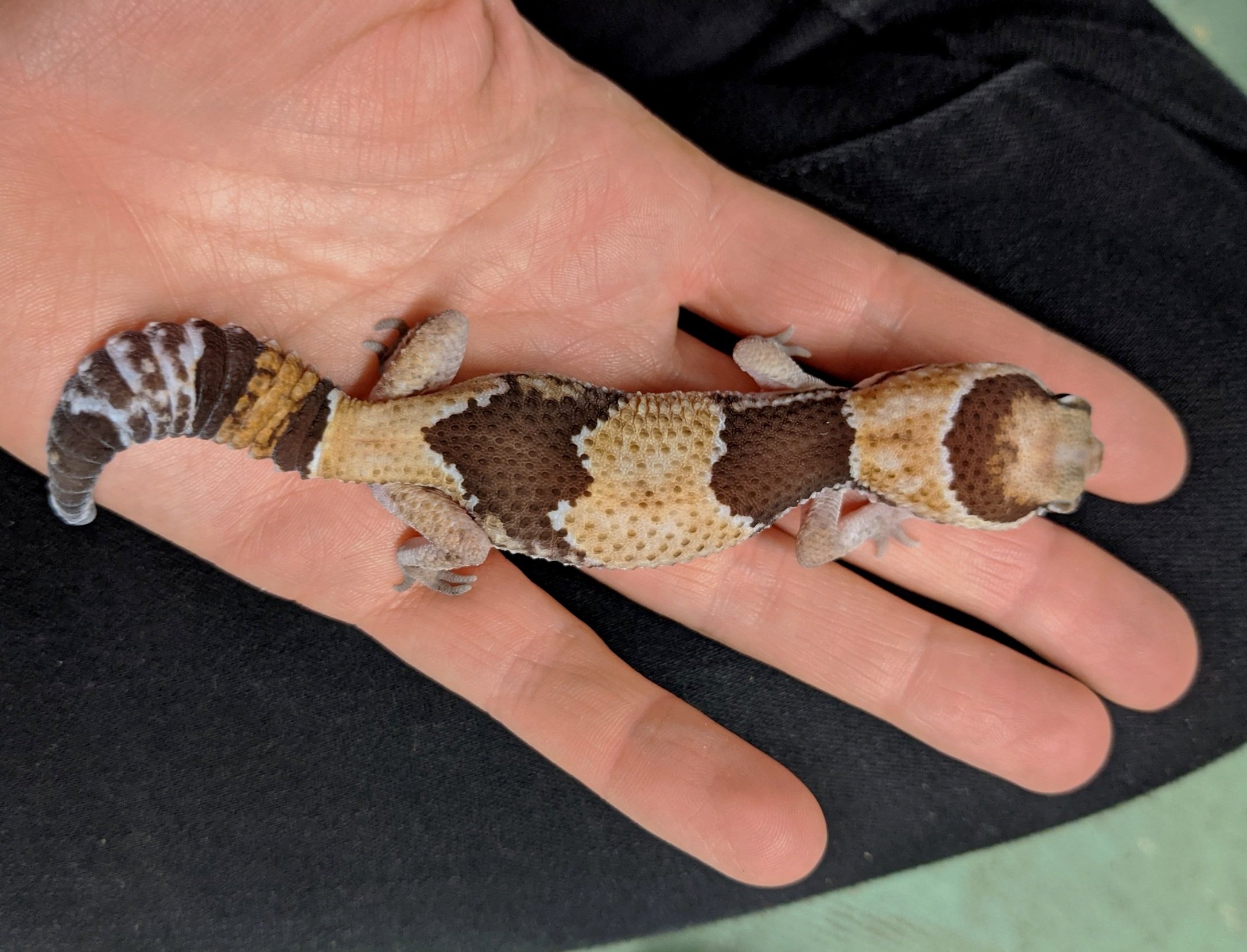Meet Our Animal Ambassadors
The majority of our animal ambassadors were previously pets that were donated to our programs when the owners could no longer care for them.
Frida & Agatha, Kenyan Sand Boas
Eryx colubrinus
A face the shape of a shovel helps these little snakes burrow beneath the sand. They are slow moving and small, making them the perfect first snake to meet!
Sofia, Red-Footed Tortoise
Chelonoidis carbonaria
Not all tortoises live in the desert - this one comes from the Amazon. Her shell is her ribcage which has nerve endings. She enjoys back scratches and eat bananas from your hand.
Elizardbeth, Chahoua Gecko
Mniarogekko chahoua
These arboreal geckos have toe pads that can hold 100 pounds per square inch, allowing them to effortlessly climb trees. They are found sleeping on tree branches during the day and are active at night.
Silver & Drexel, Legless lizards
Pseudopus apodus
Not all lizards have legs! They burrow, which is why they lack limbs. Learn more: https://www.youtube.com/watch?v=6WY2-ErDyMQ&t=18s
Larry, Giant Gecko
Rhacodactylus leachianus
The largest gecko in the world can grow to be up to 18” long and can live 20 years old.
Jenny, Ball Python
Python regius
Ball pythons are a heavy bodied snake that spend most of their time underground. Females use bodies to regulate the humidity of their eggs by coiling around them during incubation.
Slinky & Sequoia, Gopher Snakes
Pituophis catenifer
When frightened in the wild, they shake their tail, hiss and flatten their head, causing this Bay Area snake to be confused for a rattlesnake. Gopher snakes are harmless to humans and help keep our homes and gardens rodent free.
Emily, Eastern Kingsnake
Lampropeltis getula
Emily has met thousands of people of over the past 10 years and was even a guest on the Rachael Ray show in 2018!
Ping & Nova, Fat-tailed Geckos
Hemitheconyx caudicinctus
A favorite for tiny hands, the African fat-tailed geckos store fat in their tail! If they have enough stored up, they can go up to 6 months without eating.
Frank, Giant Hissing Cockroach
Gromphadorhina portentosa
This Madagascar insect is one of the largest cockroaches in the world, growing up to 3” long. They give live birth. Females carry their egg case internally and give live birth to 30-60 babies at once. They can live up to 5 years.
Tootsie Roll, White’s Tree Frogs
Litoria caerulea
Each species of frog produces it's own unique mucus that has properties that kill bacteria, viruses or fungi that might try to live on their damp skin. Many of these secretions have been proven to be useful against viruses that effect humans.
White's tree frogs produce a substance in their mucus that kills HIV cells.
Range: Australia & New Guinea
Miley, California Kingsnake
Lampropeltis californiae
Kingsnakes get their name from their diet which can include other snakes, including rattlesnakes. Kingsnakes are immune to rattlesnake venom.
Flo, Florida Kingsnake
Lampropeltis getula
Curios and active, this snake loves exploring new places and meeting new people.
Salchicha, Blue Tongue Skink
Tiliqua scincoides
This Australian lizard has a huge blue tongue that it uses to scare off predators if frightened. During programs, you’ll see Sal’s tongue popping out just a bit to smell his surroundings.
Acorn, Terrestrial Garter Snake
Thamnophis elegans
Garter snakes are one of the most common snakes in the Bay Area. Acorn came to us after an injury from being stuck in a glue trap and losing most of their belly scales. They have made a great recovery and are now part of our Neighborhood Snakes program.















